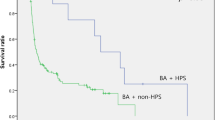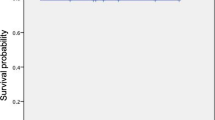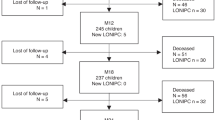Abstract
Hepatopulmonary syndrome (HPS)—a pulmonary complication observed in patients who have chronic liver disease and/or portal hypertension—is attributed to intrapulmonary vascular dilatation and induces severe hypoxemia. HPS is mainly detected when patients are included on the waiting list for orthotopic liver transplantation (OLT) and can be diagnosed by blood gas analysis, transthoracic contrast-enhanced echocardiography or body scan with 99mTc-labeled macroaggregated albumin perfusion. When the partial pressure of arterial oxygen (PaO2) is ≥80 mmHg, it is unlikely that the patient has HPS. When the PaO2 is <80 mmHg, imaging techniques should be used to confirm or exclude pulmonary vascular dilatation. When a diagnosis of HPS is confirmed, knowing the degree of hypoxemia is crucial for optimum patient management. Patients who have a PaO2 ≥50 mmHg but <60 mmHg should be prioritized for OLT. This procedure is not indicated for patients with a PaO2 between 60 mmHg and 80 mmHg, although follow-up every 3 months is recommended to detect any deterioration of the PaO2. A PaO2 of <50 mmHg might preclude OLT, because mortality and morbidity after OLT are greatly increased in these patients.
Key Points
-
Hepatopulmonary syndrome is defined by hypoxemia, intrapulmonary vascular dilatation, and liver disease
-
Careful evaluation of these three criteria is important
-
When the diagnosis of hepatopulmonary syndrome is certain, the severity of the syndrome should be regularly assessed
-
The priority for liver allocation in patients with hepatopulmonary syndrome and a partial pressure of arterial oxygen (PaO2) in the range 50–60 mmHg should be confirmed
-
The decision to perform liver transplantation in patients with hepatopulmonary syndrome and a PaO2 below 50 mmHg is made on a case-by-case basis
This is a preview of subscription content, access via your institution
Access options
Subscribe to this journal
Receive 12 print issues and online access
$209.00 per year
only $17.42 per issue
Buy this article
- Purchase on Springer Link
- Instant access to full article PDF
Prices may be subject to local taxes which are calculated during checkout


Similar content being viewed by others
References
Rodriguez-Roisin R et al. (2005) Highlights of the ERS Task Force on pulmonary-hepatic vascular disorders (PHD). J Hepatol 42: 924–927
Palma DT and Fallon MB (2006) The hepatopulmonary syndrome. J Hepatol 45: 617–625
Herve P et al. (2007) Pulmonary vascular abnormalities in cirrhosis. Best Pract Res Clin Gastroenterol 21: 141–159
Rodriguez-Roisin R et al. (2004) Pulmonary-hepatic vascular disorders (PHD). Eur Respir J 24: 861–880
Swanson KL et al. (2005) Natural history of hepatopulmonary syndrome: Impact of liver transplantation. Hepatology 41: 1122–1129
Gaines DI and Fallon MB (2004) Hepatopulmonary syndrome. Liver Int 24: 397–401
Gomez FP et al. (2004) Gas exchange mechanism of orthodeoxia in hepatopulmonary syndrome. Hepatology 40: 660–666
Abrams GA et al. (2002) Utility of pulse oximetry in the detection of arterial hypoxemia in liver transplant candidates. Liver Transpl 8: 391–396
Schiffer E et al. (2006) Hepatopulmonary syndrome increases the postoperative mortality rate following liver transplantation: a prospective study in 90 patients. Am J Transpl 6: 1430–1437
Lima BL et al. (2004) Frequency, clinical characteristics, and respiratory parameters of hepatopulmonary syndrome. Mayo Clin Proc 79: 42–48
Kim BJ et al. (2004) Characteristics and prevalence of intrapulmonary shunt detected by contrast echocardiography with harmonic imaging in liver transplant candidates. Am J Cardiol 94: 525–528
Abrams GA et al. (1998) Use of macroaggregated albumin lung perfusion scan to diagnose hepatopulmonary syndrome: a new approach. Gastroenterology 114: 305–310
De BK et al. (2002) Occurrence of hepatopulmonary syndrome in Budd-Chiari syndrome and the role of venous decompression. Gastroenterology 122: 897–903
Fuhrmann V et al. (2006) Hepatopulmonary syndrome in patients with hypoxic hepatitis. Gastroenterology 131: 69–75
Arguedas MR and Fallon MB (2005) Hepatopulmonary syndrome. Clin Liver Dis 9: 733–746
Sammour RN et al. (2006) Pregnancy exacerbating hepatopulmonary syndrome. Obstet Gynecol 107: 455–457
Mandell MS (2006) The diagnosis and treatment of hepatopulmonary syndrome. Clin Liver Dis 10: 387–405
Schenk P et al. (2002) Hepatopulmonary syndrome: prevalence and predictive value of various cut offs for arterial oxygenation and their clinical consequences. Gut 51: 853–859
Mimidis KP et al. (1998) Prevalence of intrapulmonary vascular dilatations in normoxaemic patients with early liver cirrhosis. Scand J Gastroenterol 33: 988–992
Lange PA and Stoller JK (1995) The hepatopulmonary syndrome. Ann Intern Med 122: 521–529
Aller R et al. (1999) Diagnosis and grading of intrapulmonary vascular dilatation in cirrhotic patients with contrast transesophageal echocardiography. J Hepatol 31: 1044–1052
Fallon MB et al. (2006) Model for end-stage liver disease (MELD) exception for hepatopulmonary syndrome. Liver Transpl 12: S105–S107
Schenk P et al. (2003) Prognostic significance of the hepatopulmonary syndrome in patients with cirrhosis. Gastroenterology 125: 1042–1052
Mohamed R et al. (2002) Pulmonary gas exchange abnormalities in liver transplant candidates. Liver Transpl 8: 802–808
Swanson KL (2007) Should we screen for hepatopulmonary syndrome in liver transplant candidates? Liver Transpl 13: 183–184
United Network for Organ Sharing. Organ distribution: allocation of livers [http://www.unos.org/policiesandbylaws/policies.asp?ressources=true] (accessed 5 September 2007)
Taillé C et al. (2003) Liver transplantation for hepatopulmonary syndrome: a ten-year experience in Paris, France. Transplantation 75: 1482–1489
Krowka MJ et al. (2004) Hepatopulmonary syndrome and portopulmonary hypertension: a report of the multicenter liver transplant database. Liver Transpl 10: 174–182
Arguedas MR et al. (2003) Prospective evaluation of outcomes and predictors of mortality in patients with hepatopulmonary syndrome undergoing liver transplantation. Hepatology 37: 192–197
Collisson EA et al. (2002) Retrospective analysis of the results of liver transplantation for adults with severe hepatopulmonary syndrome. Liver Transpl 8: 925–931
Fukushima KY et al. (2007) Two cases of hepatopulmonary syndrome with improved liver function following long-term oxygen therapy. J Gastroenterol 42: 176–180
Martínez-Pallí G et al. (2005) Effect of transjugular intrahepatic portosystemic shunt on pulmonary gas exchange in patients with portal hypertension and hepatopulmonary syndrome. World J Gastroenterol 11: 6858–6862
Lasch HM et al. (2001) Use of transjugular intrahepatic portosystemic shunt as a bridge to liver transplantation in a patient with severe hepatopulmonary syndrome. Liver Transpl 7: 147–149
Rolla G et al. (1994) Methylene blue in the hepatopulmonary syndrome. N Engl J Med 331: 1098
Schenk P et al. (2000) Methylene blue improves the hepatopulmonary syndrome. Ann Intern Med 133: 701–706
Brussino L et al. (2003) Effect on dyspnoea and hypoxaemia of inhaled NG-nitro-L-arginine methyl ester in hepatopulmonary syndrome. Lancet 362: 43–44
Gomez FP et al. (2006) Effects of nebulized N(G)-nitro-L-arginine methyl ester in patients with hepatopulmonary syndrome. Hepatology 43: 1084–1091
Almeida JA et al. (2007) Deleterious effect of nitric oxide inhibition in chronic hepatopulmonary syndrome. Eur J Gastroenterol Hepatol 19: 341–346
Author information
Authors and Affiliations
Corresponding author
Ethics declarations
Competing interests
The authors declare no competing financial interests.
Rights and permissions
About this article
Cite this article
Pastor, C., Schiffer, E. Therapy Insight: hepatopulmonary syndrome and orthotopic liver transplantation. Nat Rev Gastroenterol Hepatol 4, 614–621 (2007). https://doi.org/10.1038/ncpgasthep0965
Received:
Accepted:
Issue Date:
DOI: https://doi.org/10.1038/ncpgasthep0965



